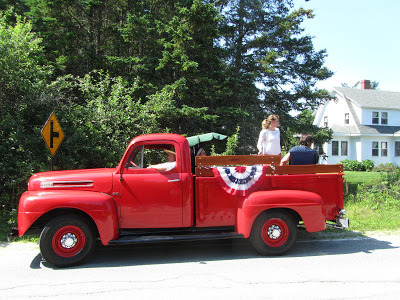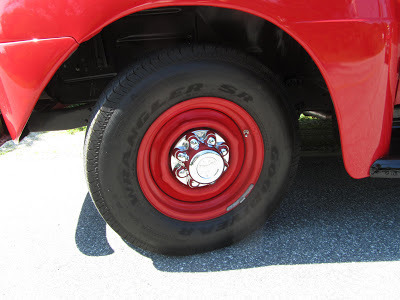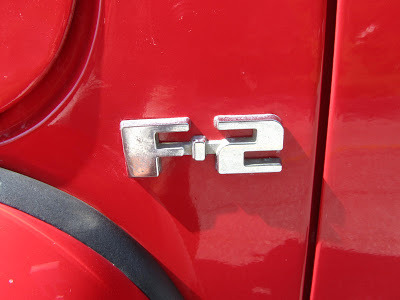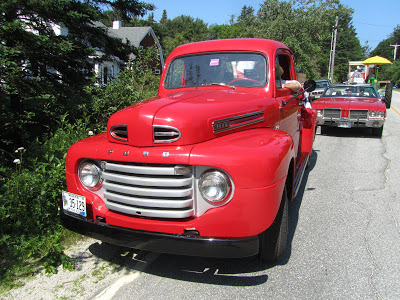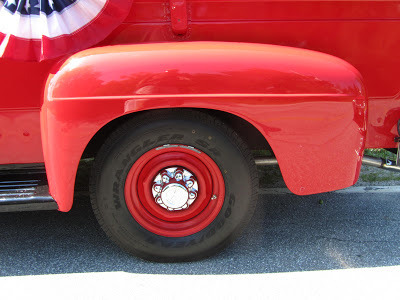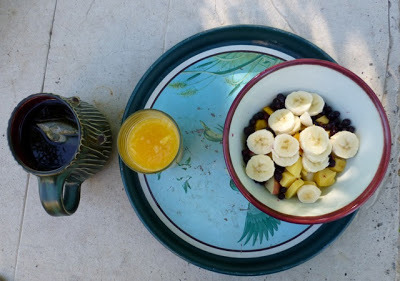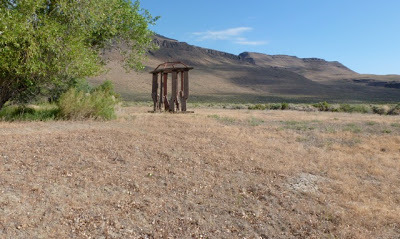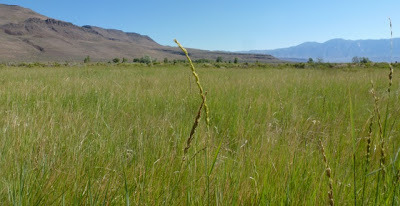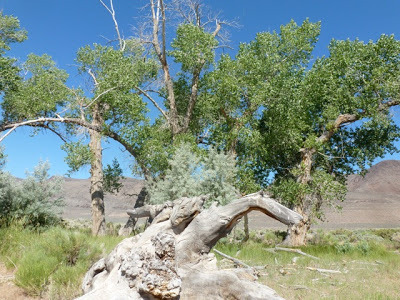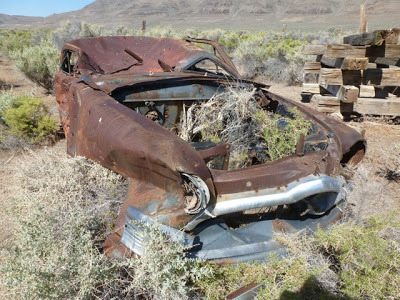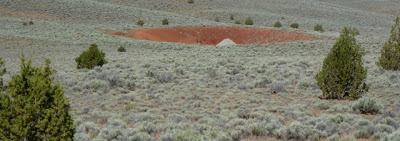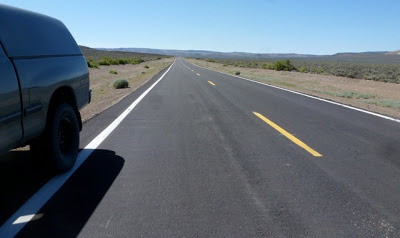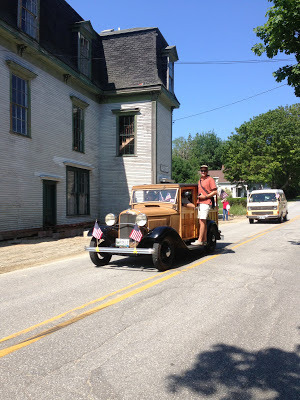Peter Behrens's Blog, page 521
July 8, 2013
Ford Model B, not?
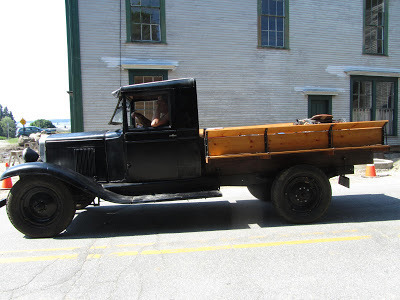
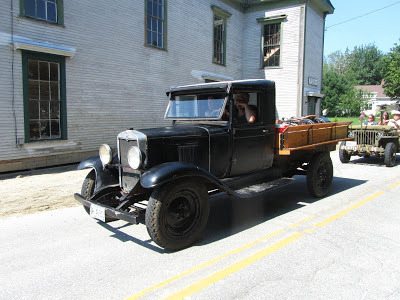
Need some help identifying this machine. My first guess would have been Ford Model B 1-ton but I think it is something else entirely. Year I would guess: 1930. Help me out here, guys.
Published on July 08, 2013 07:08
July 7, 2013
1949 Ford F2 Brooklin Maine Fourth of July
Published on July 07, 2013 18:31
July 6, 2013
Pinto Creek Stock Car Assoc. & Robert Goulet's 1966 Pontiac Parisienne
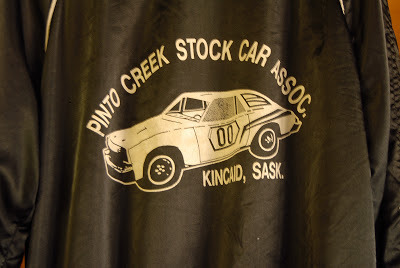


 from our man on the prairies, Alex Emond:
from our man on the prairies, Alex Emond:"Here are a few more images from my afternoon, three towns east, in Kincaid, Saskatchewan. I was sensing a deep fondness for old vehicles from the folks showing up for the parade. I'll bet every ranch and farm has at least one old 'rolling tin' that is a part of the family story and is loved, even if totally neglected . That Pontiac Parisienne was so smooth . Robert Goulet should be driving that car." --AE
Published on July 06, 2013 12:45
June, Nevada desert
Published on July 06, 2013 12:17
July 5, 2013
Author & 1932 Ford Model B woody.
Published on July 05, 2013 05:19
Nanci Griffith, 1965 Ford Econoline, and Love, Inertia, & the Perfect Stance
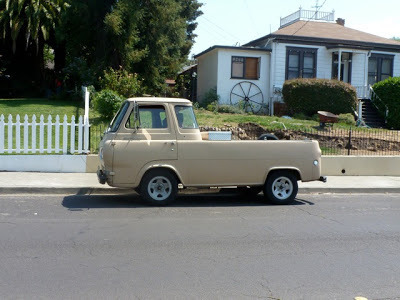 Econolines everywhere. MSM spotted this unit in Benicia, Calif. There was a red one in Gravelbourg, the heart of franco-Saskatchewan, a couple years back. And Nanci Griffith sings Ford Econoline on youtube. And of course Shawn is doing wondrous things with a 1963 Ford Falcon van (passenger version of the E'line) on the Love, Inertia, and the Perfect Stance project.
Econolines everywhere. MSM spotted this unit in Benicia, Calif. There was a red one in Gravelbourg, the heart of franco-Saskatchewan, a couple years back. And Nanci Griffith sings Ford Econoline on youtube. And of course Shawn is doing wondrous things with a 1963 Ford Falcon van (passenger version of the E'line) on the Love, Inertia, and the Perfect Stance project.
Published on July 05, 2013 05:07
1963 Thunderbird. Fire in the West.
from our correspondent in Colorado Springs:
"So now we're starting to have flash floods. Manitou streets are covered with black silt from the Waldo Canyon burn scar.
On a lighter note, I've been waiting for the right time to take photos of this "bandaid pink" Thunderbird on 30th St. at Pikes Peak."--A.L.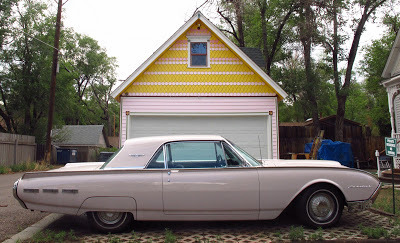 all photographs ©2013 Anne Lennox
all photographs ©2013 Anne Lennox
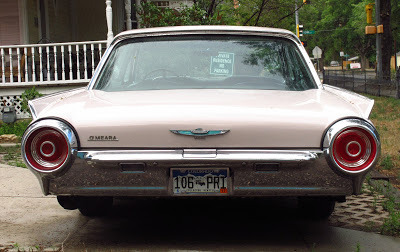
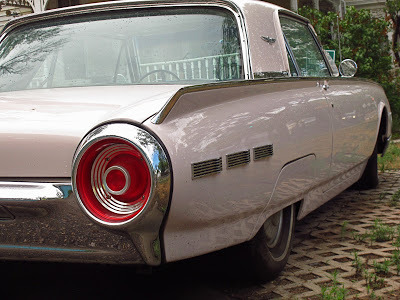
"So now we're starting to have flash floods. Manitou streets are covered with black silt from the Waldo Canyon burn scar.
On a lighter note, I've been waiting for the right time to take photos of this "bandaid pink" Thunderbird on 30th St. at Pikes Peak."--A.L.
 all photographs ©2013 Anne Lennox
all photographs ©2013 Anne Lennox


Published on July 05, 2013 04:01
July 3, 2013
Linda Fleming, Michael Moore, and MAKING PLACES at CCA, Santa Fe

Linda Fleming's and Michael Moore's show Making Places is at the Center for Contemporary Art in Santa Fe, July 12-September 22. Opening reception is Friday July 12, 5:30-7:30 pm.
From the CCA catalogue:
Making Places chronicles the life of two artists. Meshing biography with mature bodies of work – some of which span 45+ years – the exhibition is a portrait of the individuals it highlights, but moreover, it evidences the possibilities and challenges of merging art and life. Making Places speaks to the interconnectedness of space, place, time, commitment, and curiosity in cultivating an art-driven lifestyle.Long before their introduction in 1987, Linda Fleming and Michael Moore were committed artists and builders. In 1968 Fleming co-founded Libre, a community of artists in the Rocky Mountains of Colorado, where each member in the community built a house by hand. Moore, after many years of exploring the northern deserts of the Great Basin, acquired a de-accessioned radar station near Winnemucca, Nevada, which he renovated as residence and studio. To their partnership they brought a commitment to art-making and a love of self-made architecture. For the past 25 years, the couple has created an art-centric life that has led to the creation of a network of urban and rural places. Their cyclical migration between Benicia, California; Wall Spring, Nevada; and Gardner, Colorado; is a catalyst for the development of their work. Working in different mediums, both draw inspiration and material from the desert and mountain environments surrounding their studios. This is the first exhibition to jointly feature Fleming and Moore...
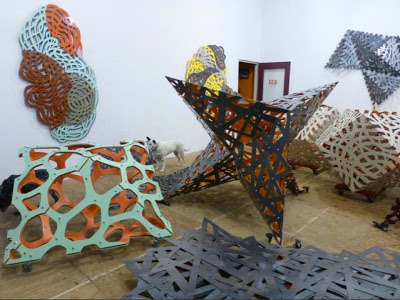
Published on July 03, 2013 07:43
Michael Moore, Auto Bios

Auto Bios
"I don’t know how it all started, probably around the time “Blood on the Tracks” came out, but for some reason, having discovered drawing from photographs and then tracing from slides in pencil to subsequently “color in” in pen and ink, I had the idea of documenting my life in cars. Or the cars in my life up to that time, or something; not “interrogate”, just record, with random reminiscence. That was about 1973 and I probably started with what I was driving at the time, which would have been a’60 Chevy shortbed, my first pickup, then worked backwards to the pre-slide era, crudely approximating the ’41 Dodge that saw me through my last years at Stanford, and “Xylo Intimides”, the VW cabriolet that I had there through my first years in some debauch and several non-fatal [obviously] crashes. By the time I arrived at my first automobile, a 1938 Chevy bought for $35 from an ad in the La Canada “Valley Sun” in 1958, and was looking, in that pre-internet age, for an image I found one parked in front of our house on Carl Street, so took a slide, which solved the problem nicely. It was a coupe [mine had been a two door sedan] but the front views were identical. The series continued sporadically until 1978 when life intervened, becoming considerably less predictable; when I returned to drawing several years later I mainly only drew in books and didn’t return to the Auto Biographies until restoration work in the wake of the Loma Prieta Earthquake of 1989 precluded daytime studio work, so I took it up as an evening endeavor and in the subsequent 23 panels caught up twelve years to end just after my father’s death in the spring of 1990. "Another long hiatus ensued, though not without several narrative series concerning Explorations, The Dream of a Home in the West, and, in late 2001, Politics. I kept cheap reproductions of these or, in the case of the Dream of the Home, copied all fifteen pages by hand for myself and additionally created from memory a narrative of everywhere I’d ever lived as well as certain other non-narrative binges of drawings, abstract, imagined or in one case using digital images sent by my son while he was visiting Afghanistan with the 82nd Airborne. "The Auto Bios remained on my mind, but I did nothing about them until the opportunity of an exhibition to explore the buildings and life behind my wife’s and my artworks; I’d recently seen a show on the history of our local arts organization in Benicia which used a timeline around the gallery to great effect and thought maybe I could use the Auto Bios in a similar vein for ours…having forgotten of course that by now they were over twenty years in arrears and that many different concerns had arisen in the interim which might complicate such an effort."Nonetheless, in December of 2012 I began digging into my archives [slides and journals where applicable] and decided to bring them as close to the present for the show as possible, using a format similar to where I’d left off in 1990, although by now the stories expanded well beyond vehicles [had already] to include house and studio building, dogs, life, death, other works and humans as well. The writing, “text as texture”, is an uncorrected [uncorrectable, really] stream of consciousness first draft that ambles along prompted by, for the most part, images in my much-edited library of slides. Although at first I began, I think, with the images, and built the words around them to fit, by the end of the first thirteen images [1958 – 78, done 1973 – 78] the images had become embedded in the narrative. The circumstances of production varied, too; for the first thirteen, in the seventies, all the work was done at night with few interruptions, and mostly stoned, high above Carl Street in the Inner Sunset of San Francisco.. After the earthquake I worked nightly in my Guerrero Street studio in the Mission, unstoned but pretty much uninterrupted.
 "The most recent emanation, twenty-three years in fifty-three pages, was accomplished between December 2012 and May 2013, beginning with that major research/organizational /mapping effort to unearth materials and recover memories. I found I was able to review slides and do the sketches as potential illustrations came up in the text, carrying on by daylight with the writing though inkings the drawings could only be done in darkness. By the end the slide record became extremely minimal, impacting both recoverable memory and available imagery, so beyond 2011 I relied on digital pictorial files, at times converting likely subjects to transparencies for drawing. As most of the writing was done by day in my Benicia street-front studio, it was subject to the interruptions of deliveries, mail, and a procession of idiots ringing doorbells for no reason, so the storyline progresses by fits and starts, dipping in and out of lists, digressions, loopy detours, rants and etc….and probably scans accordingly. " Nonetheless, I was surprised and gratified to reach the present day, for whatever it’s worth. "To be continued…” --MSMLinda Fleming's and Michael Moore's show, Making Places opens at the Center for Contemporary Art in Santa Fe July 12.
"The most recent emanation, twenty-three years in fifty-three pages, was accomplished between December 2012 and May 2013, beginning with that major research/organizational /mapping effort to unearth materials and recover memories. I found I was able to review slides and do the sketches as potential illustrations came up in the text, carrying on by daylight with the writing though inkings the drawings could only be done in darkness. By the end the slide record became extremely minimal, impacting both recoverable memory and available imagery, so beyond 2011 I relied on digital pictorial files, at times converting likely subjects to transparencies for drawing. As most of the writing was done by day in my Benicia street-front studio, it was subject to the interruptions of deliveries, mail, and a procession of idiots ringing doorbells for no reason, so the storyline progresses by fits and starts, dipping in and out of lists, digressions, loopy detours, rants and etc….and probably scans accordingly. " Nonetheless, I was surprised and gratified to reach the present day, for whatever it’s worth. "To be continued…” --MSMLinda Fleming's and Michael Moore's show, Making Places opens at the Center for Contemporary Art in Santa Fe July 12.

Published on July 03, 2013 07:32
July 2, 2013
1955 Fargo & 1920 Model T. Canada Day, Kincaid Saskatchewan
from Alex Emond our man on the high plains: "Any colour you want as long as it's black. This Model T Ford (below) goes back close to a century which is exactly how old Kincaid, Saskatchewan is. A handful of old vehicles were gathering for a parade down Main Street, to mark the village's centennial. Not so old compared to New England, but the bald ass prairie was new country then, being opened up to farmers from Quebec, Europe and some Americans who moved up to Canada. It was nice to see so many people on the main drag ...maybe 200, all told, gathered to watch the parade . Macy's - eat your heart out. Fellini would have loved it!" --AE








Published on July 02, 2013 06:34

